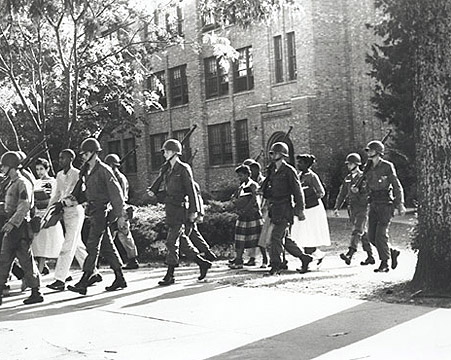1) Before you begin, you will need a clear idea of a diary or journal entry and what is expected of you-- you will need 4 to 6 of them. Here are a few examples of journal entries
2) Next you will need to familiarize yourself with the Civil Rights Era. Everyone needs to read these:
The Civil Rights Era (1865-1970)
The Modern Civil Rights Era:

The Associated Press
3) Now that you are familiar with the era it is time to choose a Civil Rights figure "to become". You are going to get inside this person's head as best you can by finding out as many details as possible about their life and the times they lived in. Below is a list of some choices. By clicking on their names you will be redirected to a web page that summarizes the importance of that person. Please do not limit your research of these individuals to the linked web pages. These links are to serve as a starting point, and through exploration, you will find that some links offer information to more than just one person. Good luck and remember the spirit of the Civil Rights Movement was non-violent resistance.
2. Ella Baker
3. Daisy Bates
4. Julian Bond
5. Medgar Evers
9. John Lewis
10. Edgar Nixon
11. Rosa Parks
13. Amelia Robinson
15. Emmitt Till
16. Roy Wilkins
18. Maya Angelou
Here are some webpages where you can get general biographies on the above people:
Biographies of selected activists and reformers
Biographies of Famous African Americans
Here are links to some photos of the Civil Rights' Era:
Pictures of the Civil Rights Era
Here are links to basic Civil Rights' Timelines:
Interactive Civil Rights Movement Timeline
Martin Luther King Jr. Timeline
You are now ready to get started learning
about the famous Civil Rights Activist that you will portray. The next
page will give you some more details on how to collect your information
and record it. Please let your teacher know if you find any really cool
web sites that you think might be helpful to other students.
Here are extra web sites to help you build your scrapbook as well as to fill in some detail for your journal:
Civil Rights Documentation Project
This is the final step on your way to the finished product and your presentation. One way to collect and examine information is to open a word document and copy and paste the URLs from the pages you're interested in as well as some of the text that will help you remember your information (i.e. notes).
Now you are ready to put together your scrapbook and type your journal entries. You can present your scrapbook in the form of a book, as a poster (which would be great because we could hang them on the walls!), or as a PowerPoint presentation. Also you can act out one or more of your journal entries in your class presentation. There are always points for creativity. Just keep in mind that you will not be graded so much on the form of your scrapbook and presentation as on the content of your scrapbook and presentation.







